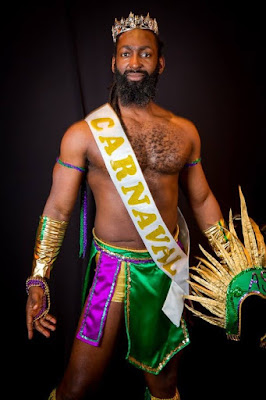I have never found writing to
be cathartic, but I have always found it to be mine — a form of creating that has
never left or been taken from me. And, for that, I am certainly grateful. I did
not, however, grow up thinking in words. I grew up thinking in sensory detail —color,
texture, light, scent, and sound. I felt everything around me bombarding me
with beauty. And, more often than not, pain.
I was too many times
described as overly sensitive. During my childhood and early teens, I created
more visual art than written work, but, around the age of 16, I became pretty
serious about writing poetry.
The confessional poets
inspired me, and learning about Adrienne Rich and Audre Lorde, reading their
work and hearing them speak, transformed my thinking about how being a lesbian
and a poet might be a necessary combination in a political realm that needed
strong, inclusive voices. It would take almost 30 years for me to write my way
into that realization.
 |
| I Paint the Flowers |
Now, so many years removed
from that formative self, I understand that I just pay attention to all that is
around me at a frequency to which very few choose access. More often than not, the
intensity of writing often sneaks up on me, whips my brain into a frenzy, and
tackles me with a kind of force from which I struggle to recover.
This means I am not able to
write all of the time. It also means I am not someone quick to cower in the
face of challenging work or relationships. Consequently, my most recent and best-received
writing has centered on the exploration of women — specifically Frida Kahlo and
Anne Sexton — who led deeply complicated artistic and (rarely) private lives. Both
women were unflinching in their highly charged self-portraits, crafting work
that turned the personal into the performative, their intimate truths into
shared open wounds. Though these women were certainly not always admirable in
their behavior, following and studying the trajectory of their creative lives
(and early deaths) has inspired a new kind of fierceness — a sharp, engaged,
and energized voice — in my own work.
 |
| Frida Filter |
But let me tell you, if I
seem restless about it all, that’s the truth — I am. And I’ve spent most of my
life being terrified of this feeling, so I don’t share it lightly. Because
being restless means slamming through boundaries, plumbing the depths, flirting
with the moon, getting into ridiculous, and possibly delicious, but, most
likely only ridiculous, trouble — all of these things that strong women often
do to make good art. Right?! Right. I don’t believe we ever really silence this
self. Maybe we push her away. Play dead for a while. If one is lucky — and I am
quite lucky — one has friends who know to come around every so often and pull
this part of us into the light — with some supervision, of course.
Many of these same friends
have helped me find a new way of bringing my work forward in the mix. I’ve
written poetry for most of my life, but it’s only in the last few years that I
have pursued playwriting. Watching other artists shape and breathe a different
kind of beauty into the beings of my plays has been a moving experience for
me.
One of those plays — Conjure: A Cycle in Three Parts — will
be fully mounted this fall (directed by Janeve West and produced by Jane Pini
of SPT Theatre Co). Conjure has deep
meaning — to be bound together by an oath, to plot or exorcize, to feel an
obligation and connection to memory and spirit.
 |
| Skull |
The women in this play are
fierce and loyal creatures. Their interactions embody all of the definitions of
conjure — they are bound together
(loyalty to the hive in Honey Song),
they break and split apart in loss and acts of art/creation (The Three Fridas), they engage in
moments of exorcism from suffering (Hummingbird
Girl), and they crave a kind of reconnection to the earth, each other, and
themselves. How these women grapple with being creators/artists is critical to
each part of Conjure. And within
these acts of creating, how they embrace and reject the boundaries of love and
belief become major themes in each piece.
In two weeks I will be 44
years old. I am uncertain. I am constantly batting the questions around. I have
no idea what comes next. But I am writing a new play — about all kinds of
snakes: snakes in churches and sideshow attractions, and, of course, there’s
the kind of snake that will stop you in your tracks just when you think you
know that path by heart. The kind of snake that will make you catch your breath
and pray. These snakes aren’t all so different, are they? I love not knowing
how this play will go — but that it will go.
 |
| Snake |
And maybe someone else will
need it as much as I needed to write it. Maybe it will somehow make a small but
important difference. Not that it will
make us all feel better. But that it will make us think. I’m counting on it.
 |
| Acid and Tender |
This is Week 16 of 52 Artists in 52 Weeks.
Thank you for reading and sharing Jen’s story today. To connect with her, hear
a clip of her poetry, and read more of her work, please visit the following
links:
Video Clip of Avaritia
Book
Twitter
Instagram: jenlrouse
Book
Instagram: jenlrouse


















